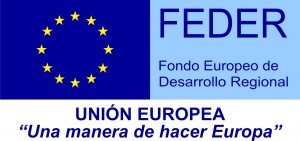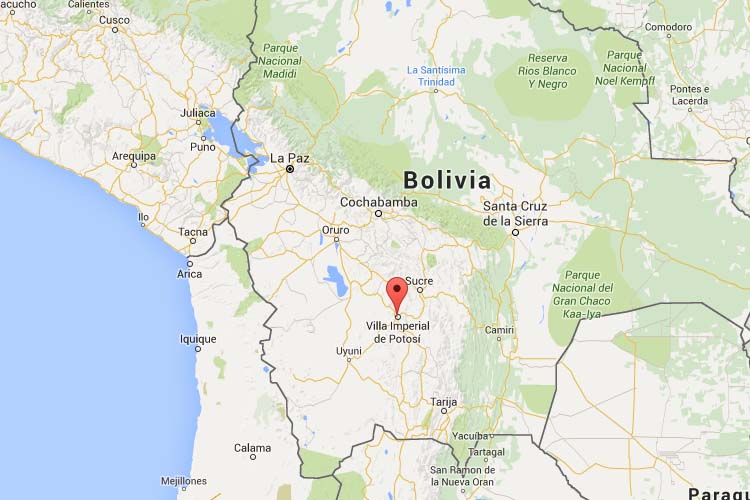With the discovery of Cerro Rico, considered the richest source of silver in history, the present-day city of Potosí was born. It began as a mining settlement established by the Spaniards on 1 April 1545, dependent on the city of La Plata (now Sucre). The amazing extraction of silver led to its rapid growth and by 1560 it had a population of 50,000. On 21 November 1561 it achieved city status and independence from the city of La Plata.
The expansion of trade, the unexpected boom of the city and the unsealed silver in circulation, among other factors, created the need to organise a coinage centre. Problems with the officials of the Lima mint and the irregular arrival of silver made Viceroy Francisco de Toledo decide to look for a new location for the mint. In mid-1572 he decided to establish a new Mint (Casa de Moneda) in La Plata. However, the vision of Viceroy Francisco de Toledo led to the construction of a Mint (Casa de Moneda) in Potosí, and on his visit to the city in 1572, he chose a site for its construction in the southern part of the Plaza del Regocijo (today's Plaza 10 de Noviembre). The work was entrusted to Jerónimo Leto and was built between December 1572 and March 1574. In 1573 some of the machinery and tools from the Lima mint were taken to the new mint in La Plata, where coins were minted. However, the high cost of production led the Viceroy to take the decision to move all the material to Potosí in 1574. According to the books of the Royal Treasury of Potosí, the first silver coinage minted at the mint began on 28 March 1574, using the rudimentary technique of hammer minting. From 1617 onwards, the last three digits of the year of minting were added to the inscriptions on the coins as a way of improving the control that existed with the mint mark and the initial of the assayer responsible for the fine-tuning of the silver used.
During the viceroyalty of Francisco de Borja y Aragón some signs of fraud were detected and, even though in 1623 an assay was carried out at the Casa de la Contratación in Seville which revealed a worrying lack of fineness in the coins from Potosí, the peninsular authorities took no notice. These anomalies continued in the following mandates, as the perpetrators of the deception themselves concealed them and Philip IV did not give them the importance they deserved. Finally, on 15 March 1648, the Crown ordered an official investigation, which was carried out by Francisco Nestares Marín, President of the Audiencia de Charcas, who after an exhaustive investigation was able to determine the cause, scope and those involved in the great swindle. Once the scandal was unmasked, the people began to refer to these low-grade coins as rochunas. Actual assays confirmed that they contained only 75% of the silver they were supposed to contain. Consequently, the potosina coinage was devalued and, therefore, affected the Spanish economy. In January 1652, Sotomayor decreed that the Rocha coins would be devalued to 6 reales and subjected to smelting. The Mints (Casas de Moneda) were obliged to quickly melt down and mint again the Potosí coinage. Subsequently, the rochunas were declared illegal to trade in 1657.
The Pragmática of 9 June 1728 issued in Madrid by Philip V demanded that the coins had to have a serrated-edge form to prevent fraudulent cutting. To do so, they had to abandon hammer minting and use flywheel presses or mills. Subsequently, the ordinance of 16 July 1730 stipulated that the manufacture of coins should be carried out on behalf of the king and not on behalf of private individuals.
In August 1749, Ventura de Santelices y Venero was commissioned to visit the Potosí Mint (Casa de Moneda) and make the necessary suggestions to produce coins with serrated edge. It was finally decided to build a new, more efficient, and larger mint, which was authorised by the Royal Decree of 3rd October 1750. The problem of the new mint began with the choice of location for the new building. Santelices argued that it would be best to extend the old one, while other local figures considered that the new building should be erected on a site in the Plaza del Gato. In August 1753, it was decided that the best option was to build on the new site as it was larger. However, Santelices, arguing economic reasons, finally managed to get the necessary reforms carried out in the current mint.
Desperate at the delays, in August 1757 the viceroy ordered the construction of the factory to begin on the site of the Plaza del Gato. The architect Salvador de Villa arrived in Potosí in November 1758 to execute the project. In November 1759, the new plans were approved. Construction began in 1759. On 29 January 1767, the new mint minted coins with hammers for the first time, and shortly afterwards, on 15 May of the same year, it was possible to mint circular coins with three flyers that were transported from Lima in 1766. A few years later, in 1772, a pair of flyers was added to these. Hammer minting continued at the old mint until 1773.
Between 1810 and 1825, during the Wars of Independence, the independence fighters occupied the Potosí Mint (Casa de Moneda) from November 1810 to August 1811, from May to December 1813 and from April to December 1815. On 6 August 1825, Upper Peru declared its independence and the Mint (Casa de Moneda) continued to mint coins in the name of Ferdinand VII. The colonial machines continued to work until 1869, when the government of Mariano Melgarejo acquired a steam-powered machine that operated until 1909. It was later replaced by an electric-powered machine by decision of President Ismael Montes. This machine minted coins until 1951.
The Potosí Mint
| South America | |
| Bolivia | |
| Potosí | |
| Potosí | |
| 1574 | |
| 1825 |
Historical review
Actual state
The first Mint (Casa de Moneda) no longer exists. Gaspar Miguel de Berrio's 1758 canvas locates it at number 31, in the southern part of the Plaza del Regocijo (today Plaza 10 de Noviembre). Today, it is the site of the Potosí Court building.
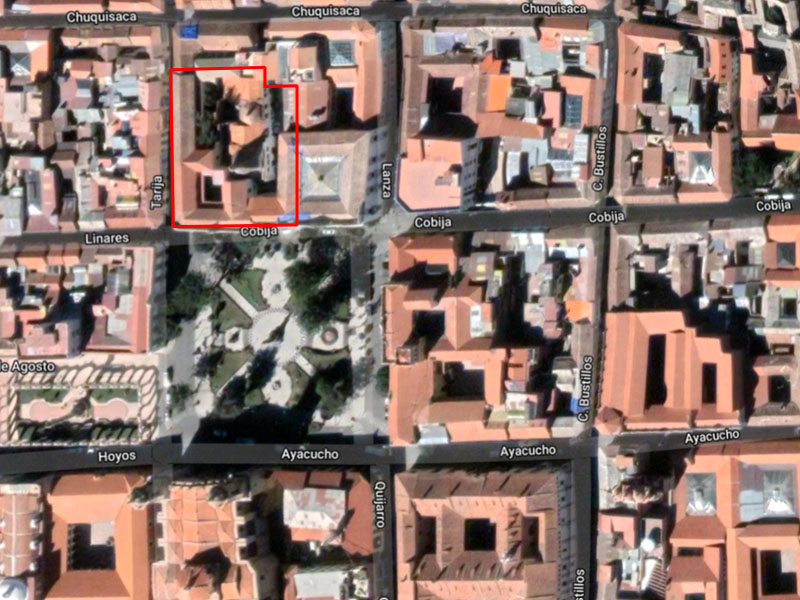
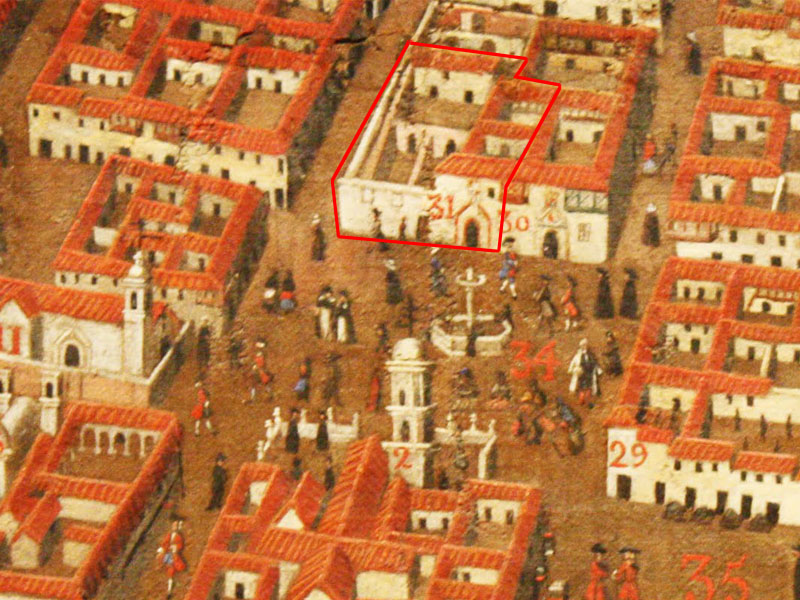
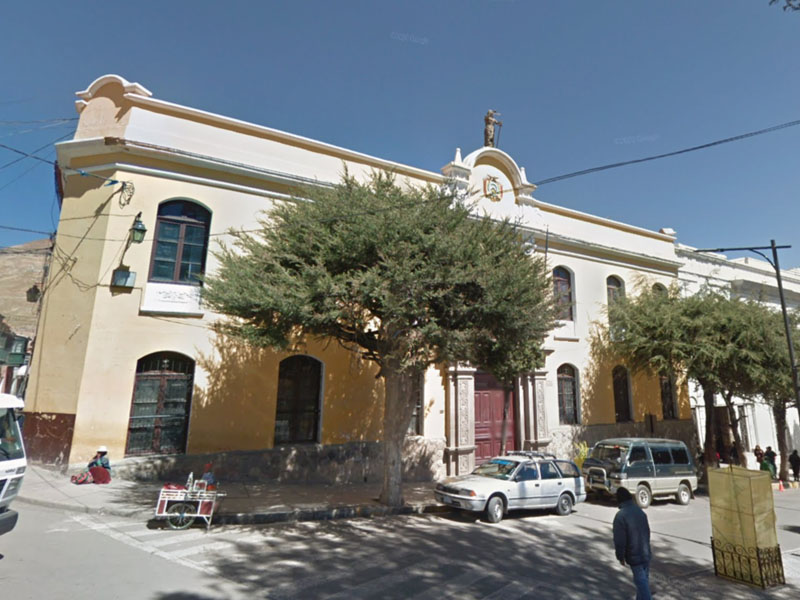
The second Mint (Casa de Moneda) is preserved in good condition between the streets Ayacucho, Quijarro, Bolívar and C. Bustillos streets. It is now a museum of its own numismatic history and historical archive. It is one of the most important museums in Bolivia, and one of the most unique in the world in terms of minting technology, as it preserves the old animal-drawn mills.
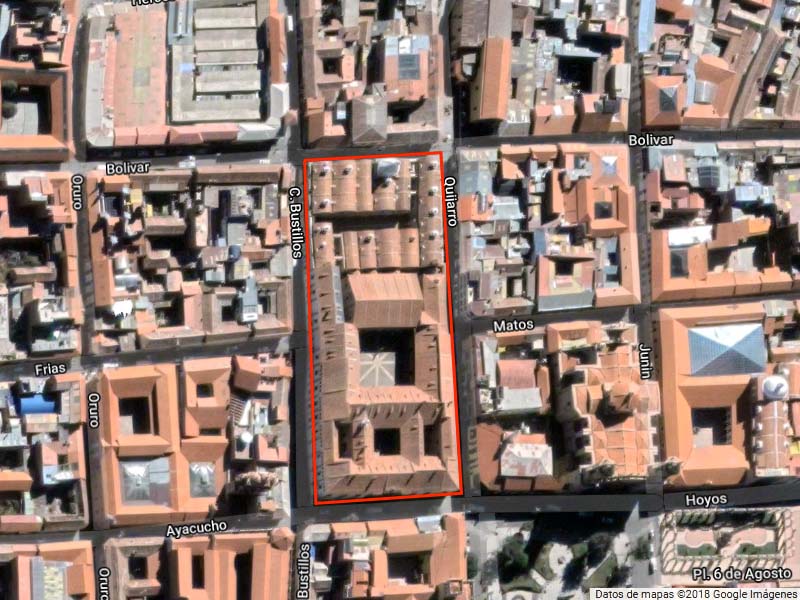
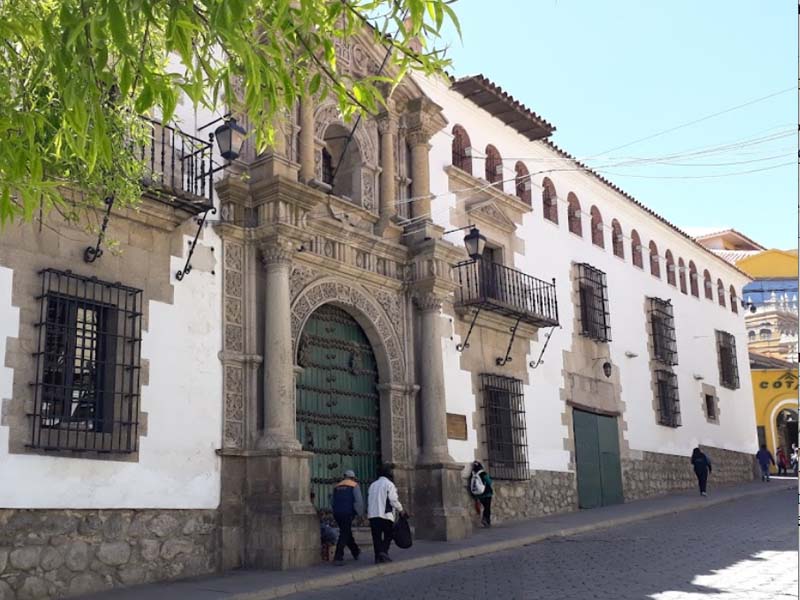
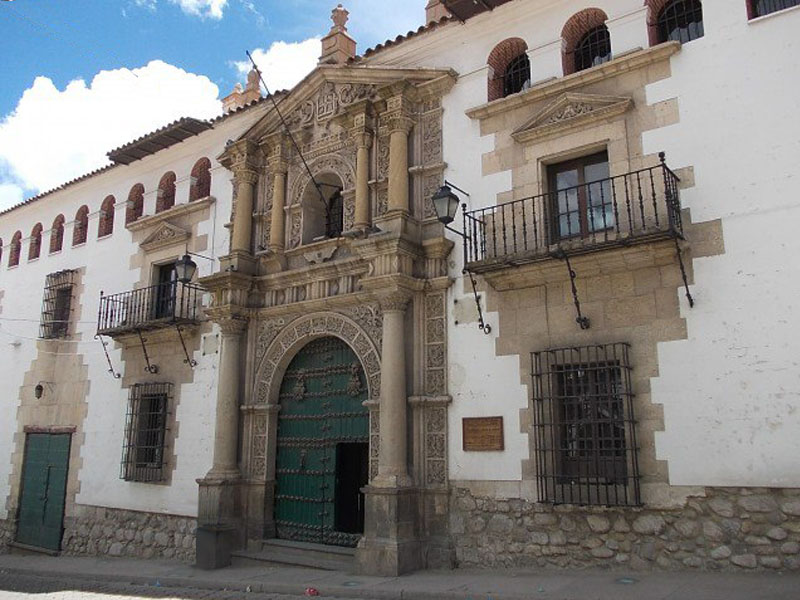
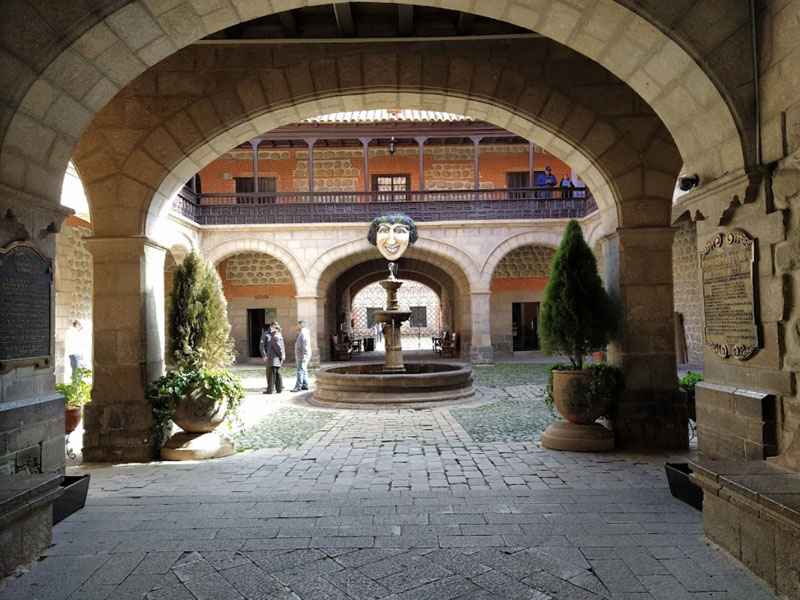
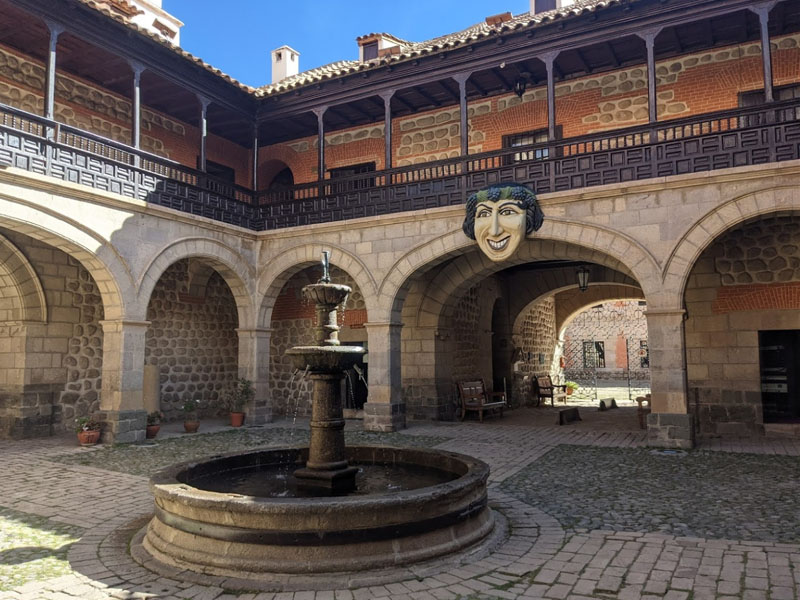
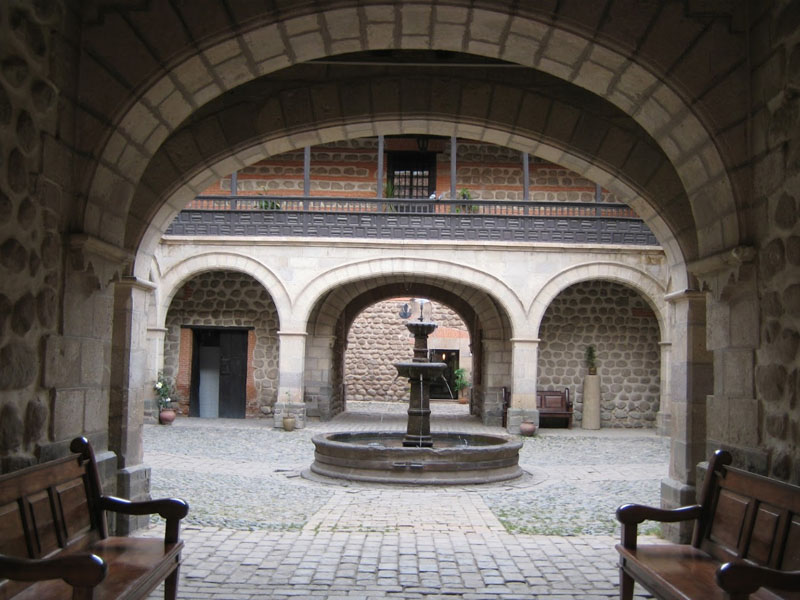
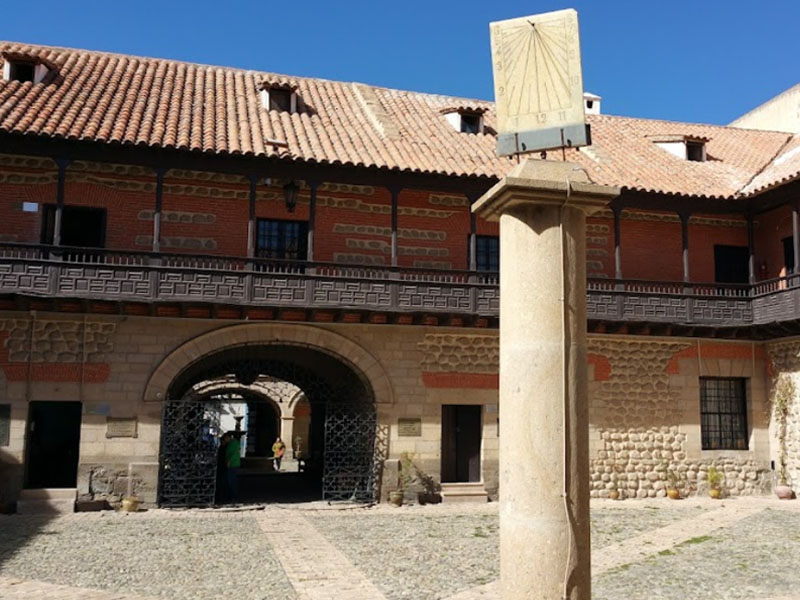
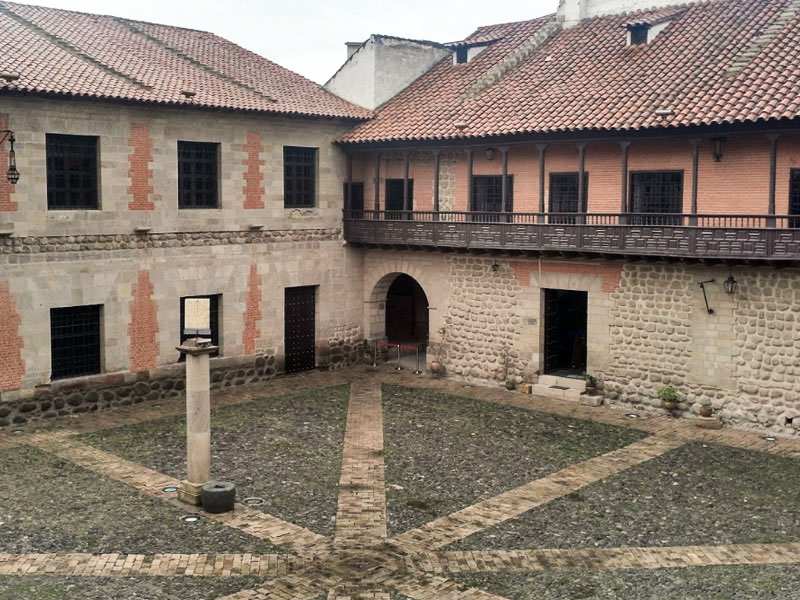
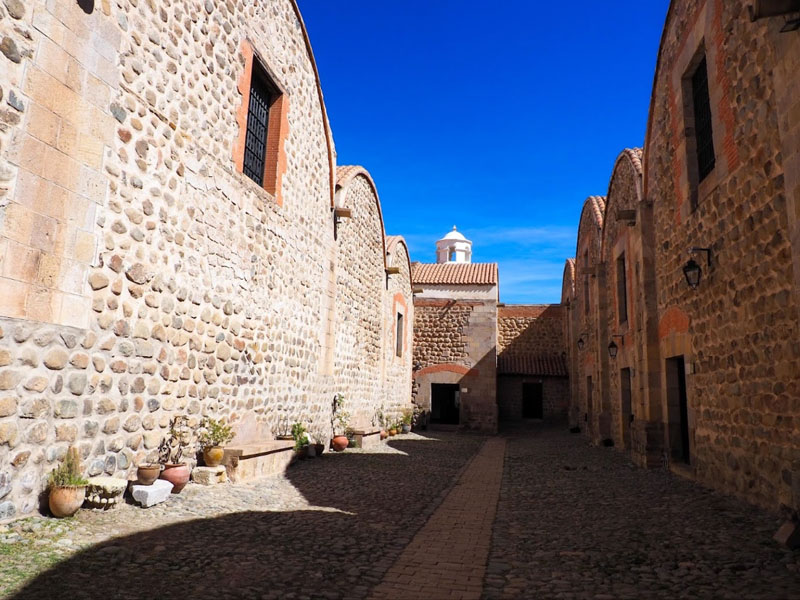
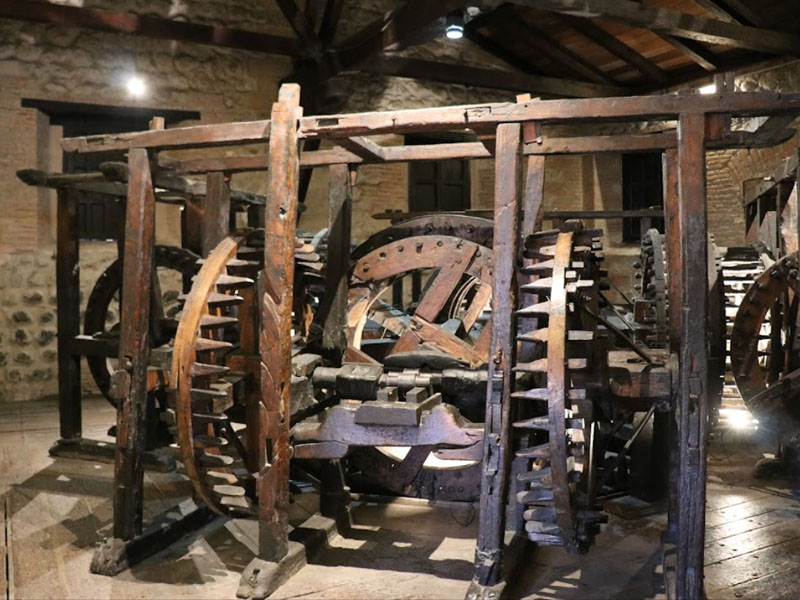
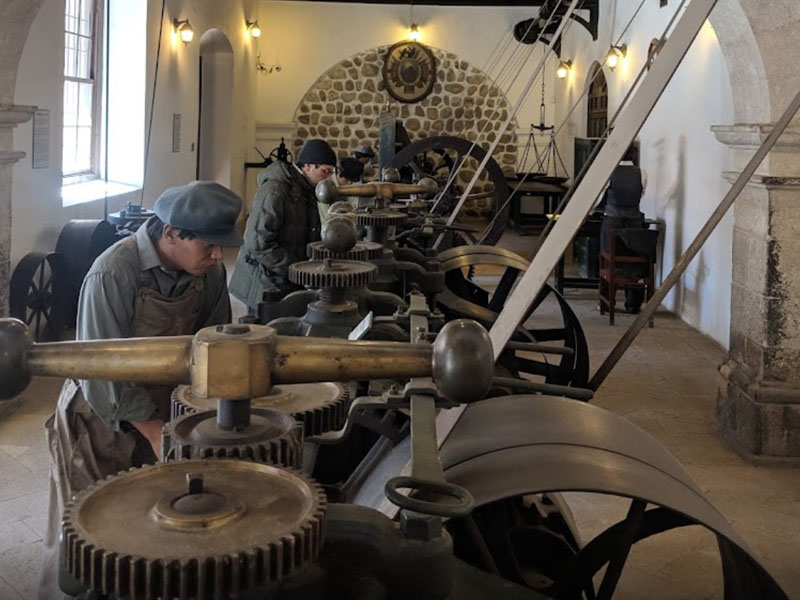
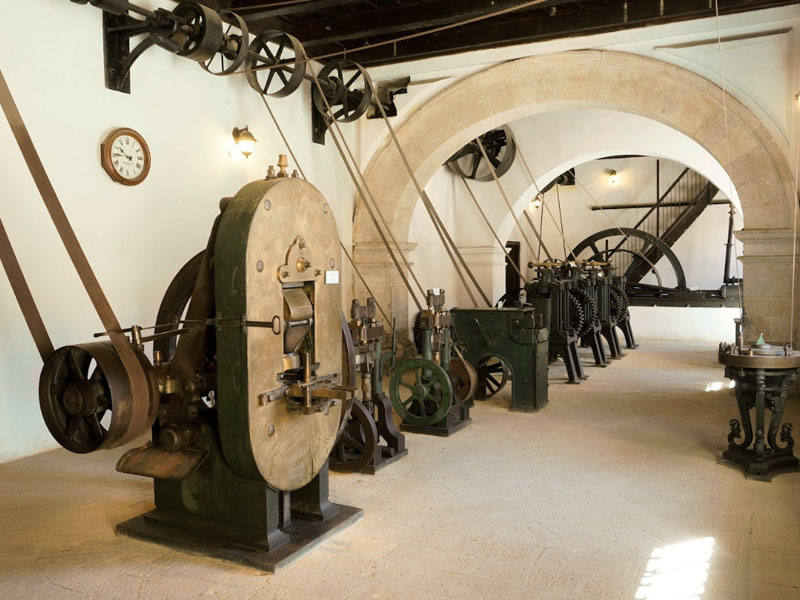



The second Mint (Casa de Moneda) is preserved in good condition between the streets Ayacucho, Quijarro, Bolívar and C. Bustillos streets. It is now a museum of its own numismatic history and historical archive. It is one of the most important museums in Bolivia, and one of the most unique in the world in terms of minting technology, as it preserves the old animal-drawn mills.












Source: Las Casa de Moneda españolas en América del sur. (Eduardo Dargent); La Casa de Moneda de Potosí durante las Guerras de la Independencia. 2015 (Arnaldo Cunietti-Ferrando); El fraude en la Casa de Moneda de Potosí. 2021. (Ricardo Méndez Barozzi)
Type of coinage
| Period | Gold | Silver | Copper | |
|---|---|---|---|---|
| Fernando VII | 1808-1833 | |||
| Carlos IV | 1788-1808 | |||
| Carlos III | 1759-1788 | |||
| Fernando VI | 1746-1759 | |||
| Luis I | 1724-1724 | |||
| Felipe V | 1700-1746 | |||
| Carlos II | 1665-1700 | |||
| Felipe IV | 1621-1665 | |||
| Felipe III | 1598-1621 | |||
| Felipe II | 1556-1598 | |||
Source: eNumismatic (José David Rodriguez Soage).
Mint die-sinkers and assayers
| Mark | Period | Names |
|---|---|---|
| R | 1574-1575? | Alonso Rincón |
| M | 1575-1576? | Miguel García? |
| L | 1575-1576? | Alonso López Barriales |
| B | 1575-1576? | Juan Ballesteros Narváez (1º vez) |
| C | 1577-1585? | Cristobal Ruiz Vizcayno |
| B | 1586 | Juan Ballesteros Narváez (2º vez) |
| A | 1586-1589 | Juan Álvarez Reinaltes |
| RL | 1589-1591 | Baltasar Ramos Leceta |
| B | 1589-1596 | Juan Ballesteros Narváez (3º vez) |
| B | 1596-1603 | Hernando Ballesteros, Juan Ballesteros Narváez |
| R | 1603-1612 | Baltasar Ramos Leceta |
| Q | 1612-1616 | Agustín de la Quadra |
| C | 1612-1616? | Francisco Calderón? |
| M | 1616-1617 | Juan Sánchez Mejía |
| PAL | 1617-1618 | Pedro Martín de Palencia |
| T | 1618-1622, 1626-1637, 1645-1648 | Juan Ximénez de Tapia |
| P | 1622-1629 | Pedro Martín de Palencia |
| TR | 1636-1645 | Pedro Treviño |
| V | 1646 | Gerónimo Velázquez |
| P | 1646-1647 | Luis de Peralta |
| R | 1647-1648 | Ramírez de Arellano |
| Z | 1647-1649 | Pedro Zambrano |
| O | 1649-1651 | Juan Rodríguez de Rodas |
| E | 1651-1667 | Antonio de Elgueta |
| C | 1678-1679 | Manuel de Cejas |
| V, VR | 1679-1697 | Pedro de Villar |
| CH | 1697, 1701-1702 | Sebastián de Chavarría |
| F | 1698-1701 | Tomás Fernandez de Ocaña |
| Y | 1701-1728 | Diego de Ybarbouro |
| M | 1721, 1727-1732 | José de Mantiezo |
| YA | 1732-1733 | Francisco de Yllaña |
| E | 1733-1737 | Esteban Gutiérrez Escalante |
| M | 1737-1740 | Pedro Gerónimo Manrique de Guzmán |
| P | 1739-1744 | Diego de Pui |
| C | 1742-1744 | José Carnicer |
| E | 1743-1747 | Gutiérrez de Escalante? |
| Q | 1744-1760 | Luis de Quintanilla |
| E | 1750-1753 | Gutiérrez de Escalante |
| C | 1753-1754 | José M.ª Caballero |
| Y | 1760-1766 | Raimundo de Yturriaga |
| V | 1760-1773 | José de Vargas y Flores |
| JR | 1767-1776, 1778 | José de Vargas y Flores - Raimundo de Iturriaga |
| PR | 1776-1796 | Pedro Narciso de Mazondo - Raimundo de Iturriaga |
| PP | 1795-1801 | Pedro Narciso de Mazondo - Pedro Martín de Albizú |
| PP | 1801-1804 | Pedro Martín de Albizú - Pedro Prudencio de Esquerrenea |
| PJ | 1803-1825 | Pedro Prudencio de Esquerrenea - Juan Palomo y Sierra |
| JP | 1817 | Juan Palomo y Sierra - Pedro Prudencio de esquerrenea |
| JL | 1823, 1825 | Juan Palomo y Sierra - ? |
| J | 1824-1825 | Juan Palomo y Sierra |
Source: Glosario de Maestros de Ceca y Ensayadores. (Josep Pellicer i Bru), 1997.
Author:
2021-09-11 .
